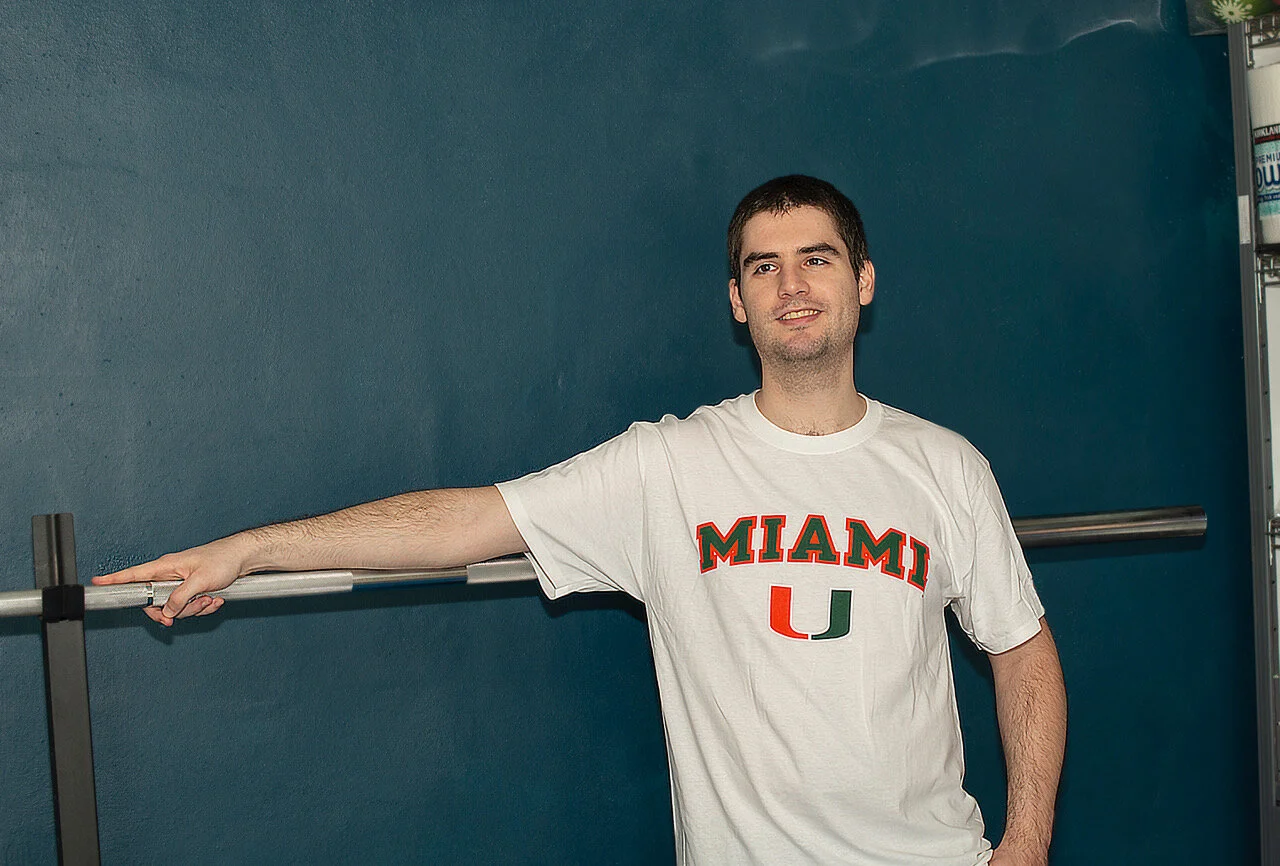A Young Man’s Story: How Motivation, Commitment and Exercise Impacted His Bone Health
Many people don’t realize that healthy bone habits begin when you’re young. Most people reach Peak Bone Mass (the strongest, most dense bone you’ll have) by their mid-to-late 20s. In order to reach Peak Bone Mass, you must get enough calcium and vitamin D in your diet and practice weight-bearing and muscle- strengthening exercises regularly. Andrew Llodrá, a young, 20-something male with low bone density knows first-hand that lifestyle changes and regular exercise can go a long way in protecting and improving bone health.
Fifty four million Americans over the age of 50 have osteoporosis or low bone density, which puts them at an increased risk of breaking bones due to falls from a standing height or even from minor activities like hugging or sneezing. Andrew’s condition was discovered much earlier in life — when he was just finishing up college. On the advice of his specialist, he visited an endocrinologist who, after administering the usual tests, suggested he start an exercise routine. In addition to exercise, he was told making some changes in diet could also help improve his bone health.
The Critical Role Exercise Plays in Healthy Bones
Andrew says he did some weight training in high school but stopped. He now wishes he had kept up the training and believes he may have had fewer bone density issues if he’d done so. He recalls his doctor, Rodrigo J. Valderrábano, M.D., M.S., explaining to him, “if I wanted to gain bone density, I needed to gain muscle mass.” Andrew took that advice to heart and started to work out on a regular basis. He even created a home gym to ensure that he could easily incorporate exercise into his daily routine. Every three months, Dr. Valderrábano reviewed his workouts and guided what specific exercises he should be doing to help his progress and ensure the regimen was being practiced safely.
Andrew’s regimen was extremely successful in helping him increase bone density. In fact, he says that his improvements were so significant, that it stunned his doctor. “After two years of me visiting this endocrinologist and taking his advice, he reviewed one of the DXA scans and was so impressed with it that he said my before and after results were comparable to if I had been taking drugs of a high potency. In fact, he thought my results were potentially even better given the timeframe.”
Andrew’s bone density gains were possible because of his commitment to working out several times a week and the fact that he also made some major modifications to his diet. This included monitoring his calcium and vitamin D intake and quantifying his protein consumption to ensure that his muscle gains continued. He also made these changes in a critical “bone building” stage of life.
Physical activity and exercise help your bones in many ways and, as we’ve seen in Andrew’s case, can yield a tremendously positive impact. People who have previous bone fractures may be required to take extra precautions, but exercise and safe movement have been shown to help with bone density and osteoporosis by:
Promoting bone and muscle strength
Keeping you steadier on your feet
Protecting your back from injury
Promoting flexibility
The thought of starting something new may be overwhelming, but those who are sedentary, and usually have the highest perceived barrier to starting an exercise routine, potentially have the most to gain. It’s never too late to make positive changes and even small steps can produce significant results. Making regular physical activity part of your life can help reap many rewards, especially from a bone-density perspective. Just remember to talk to your doctor first.
Engage in Regular Exercise
As Andrew says, “you just have to stay active.” What that means differs from individual to individual, but whether it’s hitting the gym, taking a walk, or playing a sport, it’s important to put some activity into your daily routine.
The goal with weight-bearing activities is to add some additional force to your bones, or skeleton, so they get stronger. You might think of them as “bone-building or strengthening” activities. Muscle strengthening activities work by “pulling” on your bones and giving them a workout.
Low-impact weight-bearing activities include walking, Zumba, low-impact aerobics, and dancing are all great options.
High-impact weight-bearing exercises include hiking, jogging/running, jumping rope, and tennis.
Muscle-strengthening activities include yoga and Tai Chi. Other options include lifting weights, lifting your own body weight and using elastic exercise bands.
Exercising with Osteoporosis
If you’ve already been diagnosed with osteoporosis, exercise and movement are key to bone health, whatever your age or wellness level. While there’s no cure for the disease, taking these proactive steps to protect and strengthen your bones can slow or prevent its progress.
Andrew looks forward to continuing his routine well into old age and hopes to remain active and mobile throughout his lifetime. “My goal is to continue doing what I’m doing today, continue working out, continue being active and just seeing, maybe by the time I’m pretty much over 70, I'll still be doing what I'm doing today. That’d be kind of cool, right?”
Yes, we agree – that would be very cool!
This story is part of a support initiative called Voices of Osteoporosis: Stories of Hope and Inspiration. If you have experienced osteoporosis as a patient or caregiver, we invite you to share your story. Your story could inspire others to learn how to protect their ability to live their best life and stay bone strong. Click here to learn more.



